
A motorcycle is a two or three-wheeled motor vehicle steered by a handlebar from a saddle-style seat.

An anti-lock braking system (ABS) is a safety anti-skid braking system used on aircraft and on land vehicles, such as cars, motorcycles, trucks, and buses. ABS operates by preventing the wheels from locking up during braking, thereby maintaining tractive contact with the road surface and allowing the driver to maintain more control over the vehicle.
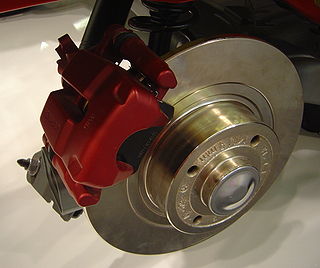
A disc brake is a type of brake that uses the calipers to squeeze pairs of pads against a disc or a "rotor" to create friction. This action slows the rotation of a shaft, such as a vehicle axle, either to reduce its rotational speed or to hold it stationary. The energy of motion is converted into waste heat which must be dispersed.

A tricycle, sometimes abbreviated to trike, is a human-powered three-wheeled vehicle.

An electric unicycle is a self-balancing personal transporter with a single wheel. The rider controls speed by leaning forwards or backwards, and steers by twisting or tilting the unit side to side. The self-balancing mechanism uses accelerometers, gyroscopes, and a magnetometer. In 2020, suspension models were introduced by three major manufacturers: Begode, Kingsong and Inmotion.
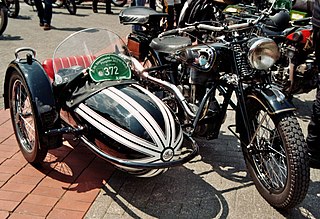
A sidecar is a one-wheeled device attached to the side of a motorcycle, scooter, or bicycle, making the whole a three-wheeled vehicle. A motorcycle with a sidecar is sometimes called a combination, an outfit, a rig or a hack.

Suspension is the system of tires, tire air, springs, shock absorbers and linkages that connects a vehicle to its wheels and allows relative motion between the two. Suspension systems must support both road holding/handling and ride quality, which are at odds with each other. The tuning of suspensions involves finding the right compromise. It is important for the suspension to keep the road wheel in contact with the road surface as much as possible, because all the road or ground forces acting on the vehicle do so through the contact patches of the tires. The suspension also protects the vehicle itself and any cargo or luggage from damage and wear. The design of front and rear suspension of a car may be different.
Automobile handling and vehicle handling are descriptions of the way a wheeled vehicle responds and reacts to the inputs of a driver, as well as how it moves along a track or road. It is commonly judged by how a vehicle performs particularly during cornering, acceleration, and braking as well as on the vehicle's directional stability when moving in steady state condition.

Aquaplaning or hydroplaning by the tires of a road vehicle, aircraft or other wheeled vehicle occurs when a layer of water builds between the wheels of the vehicle and the road surface, leading to a loss of traction that prevents the vehicle from responding to control inputs. If it occurs to all wheels simultaneously, the vehicle becomes, in effect, an uncontrolled sled. Aquaplaning is a different phenomenon from when water on the surface of the roadway merely acts as a lubricant. Traction is diminished on wet pavement even when aquaplaning is not occurring.
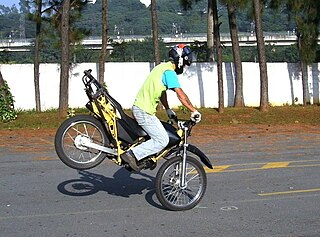
Weight transfer and load transfer are two expressions used somewhat confusingly to describe two distinct effects:

Countersteering is used by single-track vehicle operators, such as cyclists and motorcyclists, to initiate a turn toward a given direction by momentarily steering counter to the desired direction. To negotiate a turn successfully, the combined center of mass of the rider and the single-track vehicle must first be leaned in the direction of the turn, and steering briefly in the opposite direction causes that lean. The rider's action of countersteering is sometimes referred to as "giving a steering command".

A three-wheeler is a vehicle with three wheels. Some are motorized tricycles, which may be legally classed as motorcycles, while others are tricycles without a motor, some of which are human-powered vehicles and animal-powered vehicles.
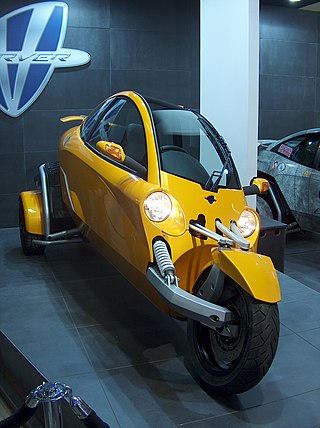
A tilting three-wheeler, tilting trike, leaning trike, or even just tilter, is a three-wheeled vehicle and usually a narrow-track vehicle whose body and or wheels tilt in the direction of a turn. Such vehicles can corner without rolling over despite having a narrow axle track because they can balance some or all of the roll moment caused by centripetal acceleration with an opposite roll moment caused by gravity, as bicycles and motorcycles do. This also reduces the lateral acceleration experienced by the rider, which some find more comfortable than the alternative. The narrow profile can result in reduced aerodynamic drag and increased fuel efficiency. These types of vehicles have also been described as "man-wide vehicles" (MWV).
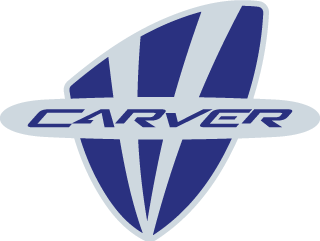
Carver Europe B.V. is a Dutch company that develops and manufactures three-wheeled electric enclosed man-wide vehicles. The company's core technology is the Dynamic Vehicle Control (DVC) system, which enables narrow vehicles to make banked turns, aiding stability when turning at higher speeds.

The CLEVER is a type of tilting three-wheeled motor vehicle that was developed in a collaboration between the University of Bath, BMW and a number of other partners from across Europe. CLEVER is designed as an alternative to conventional means of personal urban transport. The narrow body endows it with some of the manoeuvrability and congestion avoiding capability of a motorcycle, whilst offering comparable weather and impact protection to a car. Carbon emissions are reduced as a function of low weight and a small frontal area. The narrow track width requires that CLEVER tilts into corners to maintain stability; thus it is fitted with a Direct Tilt Control (DTC) system that uses hydraulic actuators linking the cabin to the non-tilting rear engine module.
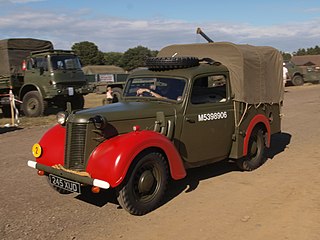
Fender is the American English term for the part of an automobile, motorcycle or other vehicle body that frames a wheel well. Its primary purpose is to prevent sand, mud, rocks, liquids, and other road spray from being thrown into the air by the rotating tire. Fenders are typically rigid and can be damaged by contact with the road surface.

Bicycle and motorcycle dynamics is the science of the motion of bicycles and motorcycles and their components, due to the forces acting on them. Dynamics falls under a branch of physics known as classical mechanics. Bike motions of interest include balancing, steering, braking, accelerating, suspension activation, and vibration. The study of these motions began in the late 19th century and continues today.

A motorcycle trailer is either a trailer used to carry motorcycles or one to be pulled by a motorcycle in order to carry additional gear.
Hans Bastiaan Pacejka was an expert in vehicle system dynamics and particularly in tire dynamics, fields in which his works are now standard references. He was Professor emeritus at Delft University of Technology in Delft, Netherlands.

In vehicle acrobatics, a wheelie, or wheelstand, is a vehicle maneuver in which the front wheel or wheels come off the ground due to sufficient torque being applied to the rear wheel or wheels, or rider motion relative to the vehicle. Wheelies are usually associated with bicycles and motorcycles, but can be done with other vehicles such as cars, especially in drag racing and tractor pulling.
























